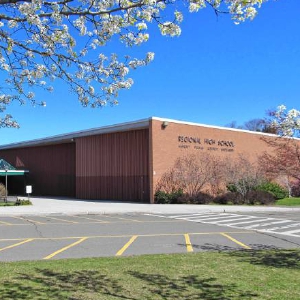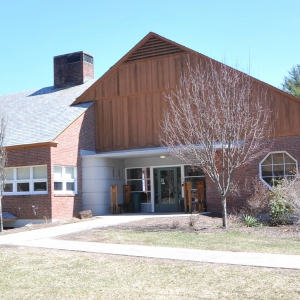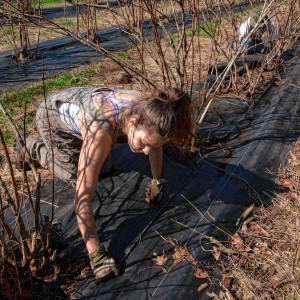Invasion of the gypsy moths: Invasive caterpillar pest plagues New England
| Published: 06-13-2017 5:21 PM |
The gypsy moth caterpillar’s on-again, off-again reign of destruction over Massachusetts forests starts in 1868 or 1869 in Medford.
Leopold Trouvelot was an amateur entomologist who, in 1852, left France as Napoleon III was fastening his grip on power. He arrived in Cambridge in 1855. In Medford in 1868 or 1869, Trouvelot tried to cross-breed the gypsy moth, native to Europe, with the silkworm, in an effort to create a silkworm compatible with the New England climate.
Some of the caterpillars escaped, though available accounts are sketchy as to how. And so began this saga.
Because it has no natural predators, the gypsy moth’s reach is able to spread unabated. Its prevalence is cyclical, and the bugs thrive in dry conditions.
Hence the latest rampage, which has lasted in Massachusetts since 2015. Last summer, the caterpillars munched through nearly 353,000 acres, nine times as much acreage as 2015, according to state aerial surveys. But with wetter weather this year, scientists are hoping another invasive species — a Japanese fungus that arrived in Massachusetts in 1989 — delivers a blow to the hungry caterpillars. The nucleopolyhedrosis virus, or NPV virus for short, could also depress the caterpillars’ numbers this year.
“With all this rain, we’re likely to see a spectacular collapse of the gypsy moth,” said Joseph S. Elkinton, an entomology professor at the University of Massachusetts Amherst. “The big question we’re facing is: Will the fungus epidemic occur soon enough to stop defoliation?”
Around the state, those in-the-know about the pests are hoping for the best, but are expecting another round of serious defoliation on primarily oak trees — which could succumb to drought stress and repeated defoliation. Locally, gypsy moths have been documented mostly in eastern Hampshire, Hampden and Franklin counties.
“It is pretty bad,” Natascha Batchelor, a district manager for Davey Tree in Cape Cod, said last Wednesday. “We’re getting calls constantly for it.”
Article continues after...
Yesterday's Most Read Articles
 South Hadley’s Lauren Marjanski signs National Letter of Intent to play soccer at Siena College
South Hadley’s Lauren Marjanski signs National Letter of Intent to play soccer at Siena College
 LightHouse Holyoke to buy Gateway City Arts, expand offerings and enrollment at alternative school
LightHouse Holyoke to buy Gateway City Arts, expand offerings and enrollment at alternative school
 Treehouse, Big Brothers Big Sisters turn race schedule snafu into positive
Treehouse, Big Brothers Big Sisters turn race schedule snafu into positive
 South Hadley man fatally shot in attempted robbery
South Hadley man fatally shot in attempted robbery
 Granby man admits guilt, gets 2½ years in vehicular homicide
Granby man admits guilt, gets 2½ years in vehicular homicide
 Area briefs: Transhealth to celebrate 3 year; Holyoke to plant tree at museum; Documentary film about reparations focus of Unitarian talk
Area briefs: Transhealth to celebrate 3 year; Holyoke to plant tree at museum; Documentary film about reparations focus of Unitarian talk
Davey primarily serves residential clients, and she said the pests chew through oak, maple, birch and poplar trees.
Batchelor said trees can be sprayed until they are defoliated, at which point she recommends owners go into damage-control mode, watering their trees and mulching around them.
“The point where it’s just too late are when the trees are already defoliated,” Batchelor said.
Elkinton’s advice on culling the caterpillars at this late stage in their development, when many trees are already defoliated?
“Pray for rain,” he said.
When the caterpillars escaped, Trouvelot warned the people of Medford, a state Department of Conservation paper published around 1920 notes.
“The warning was so disregarded that ten years later, when a strange caterpillar began to make its appearance in Medford, it was only after considerable investigation that it was identified as the gypsy moth of Europe.”
By 1889 the state appropriated money to exterminate the insect. The government hired tree-climbers to search for egg masses, and sprayed toxic insecticides into the canopy.
“They did an incredible amount of really, really toxic pesticide spraying,” said Ken Gooch, forest health program director for the Massachusetts Department of Conservation and Recreation. “They were trying to eradicate it. But they finally found out that’s not going to happen.”
By 1900, the paper says, there were so few gypsy moths left that the state yanked the funding. But the invasive species never totally died out, and by 1905 the caterpillars were back in “alarming proportions.”
In that 1920 guide, authors recommend spraying down trees with a lead arsenate insecticide.
“The cheapest and most effective method of combating this insect in a large way is by spraying with a solution of arsenate of lead and water,” the pamphlet reads. The insecticide was banned in 1988 by the U.S. Environmental Protection Agency.
These days, state-certified applicators such as Davey’s employees are trained on the life cycles of the gypsy moth and similar pests, and must learn about the latest products designed to quell the bugs.
Batchelor said Davey applicators in the Cape spray trees with Conserve insecticide for younger caterpillars and Bifenthrin for older caterpillars, which can reach three inches in length.
“The materials we use now are much lower toxicity,” she said. “They’re not the kind of things that are going to cause bird populations to suffer, mammal populations to suffer. They have lower residual on the landscape, so they don’t last very long.”
Gypsy moth caterpillars crawled up and down tree trunks Thursday on a 25-acre slice of land in Belchertown full of “standing dead” trees that did not “leaf out” this year, and other trees lacking most of their crowns.
Foresters with W.D. Cowls, Inc., were in the middle of a salvage mission. They planned to leave this stand untouched for another 20 years “to add size and value,” said Shane R. Bajnoci, vice president of timberland management, “and here we are taking them early.”
Jacob Macko, a licensed forester who started working for the company in 2014, has been busy slapping streaks of blue paint across the trees that are, in human terms, on life support.
“We’re having to watch, make some judgement calls, on whether to salvage that tree now versus taking a chance on it not coming back next year,” Bajnoci said of trees battered by the bugs and stressed because of repeated years of dry conditions.
The caterpillars act fast, Macko said. This spring, in a matter of weeks, the trees were bare.
“It was shocking,” Macko said. “I walked out here one day and it was like winter.”
Jack Suntrup can be reached at jsuntrup@gazettenet.com.

 Amherst regional district towns seek middle ground on school increase
Amherst regional district towns seek middle ground on school increase Leverett Town Meeting voters will decide cease-fire call, budgets, town elections
Leverett Town Meeting voters will decide cease-fire call, budgets, town elections  A Look Back: April 22
A Look Back: April 22 Regional farming alliance strengthens educational, networking opportunities for apprentices
Regional farming alliance strengthens educational, networking opportunities for apprentices
